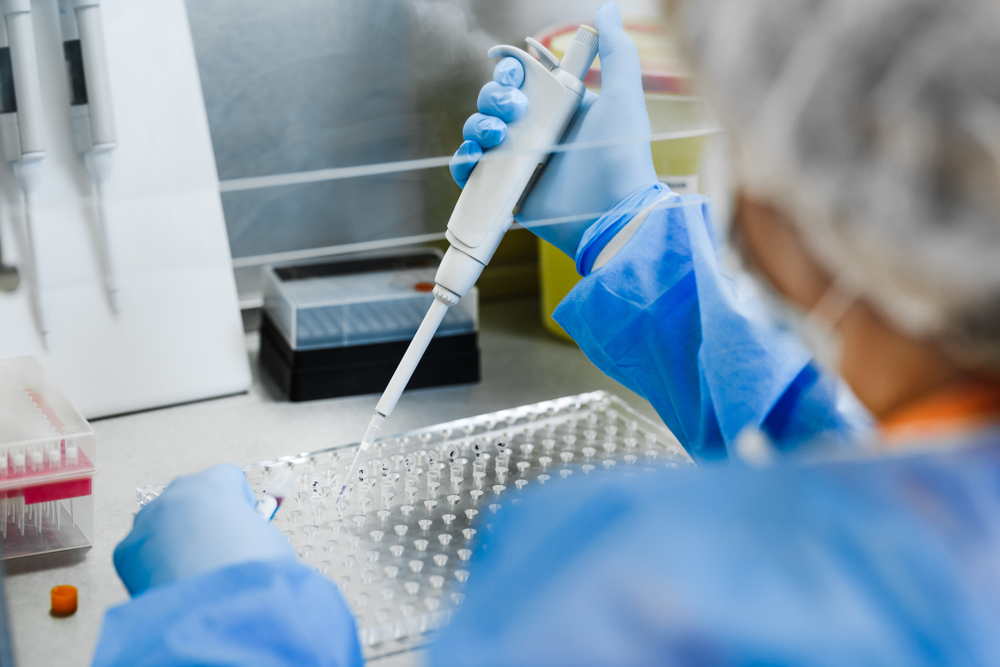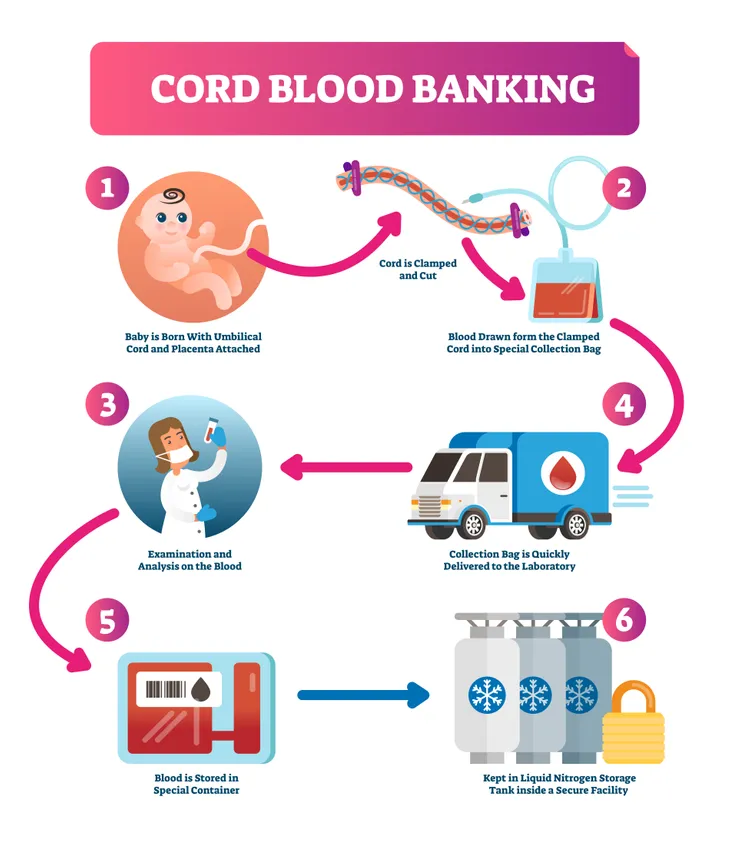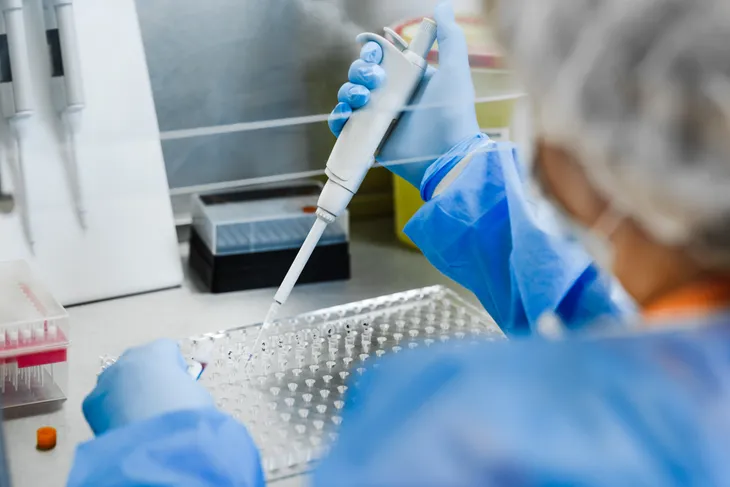July is Cord Blood Awareness month. If you aren’t familiar, the National Institutes of Health (NIH) explains that cord blood (or blood acquired from human umbilical cords) can be donated to treat diseases such as sickle cell disease, leukaemia, blood cancers, or severe aplastic anemia. Cord blood is one of 3 transplant options (other than donating peripheral blood stem cells or bone marrow) to help a patient in need of a bone marrow transplant when a matched patient relative can’t be found.
Blood cord donation is life-saving for patients with very little disruption for the donor. For instance, the NIH explains that blood from umbilical cords can be obtained soon after delivery from unrelated patients. The very small amount of the adult stem cells in the umbilical cord can be frozen, stored, and donated directly to a patient or to help improve the treatment of numerous genetic disorders and blood diseases. Here are some vital facts and tips on why and how to save your newborn’s cord blood…
Choosing to Donate Cord Blood
According to the National Marrow Donor Program, BeTheMatch.org, cord blood can be donated towards the treatment of over 80 life-threatening blood and genetic diseases (i.e., sickle cell disease, leukaemia, lymphoma, and blood cancer). However, many parents aren’t even made aware of the option to donate cord blood during their birthing consolation.
BeTheMatch.org explains that following the birthing process, typically 95-percent of cord blood (placenta and umbilical cord) is discarded as medical waste. However, a newborn’s cord blood can be donated or privately stored without putting mom or baby at risk.
Private Storage for Future Family Needs
The first option for cord blood storage is for parents to keep it exclusively for future family use (i.e., in case a biological sibling or other family member has future need of donated cord blood). In this case, your donation would be kept in a private (family) cord blood bank.
Family cord blood banks usually require a fee for donation collection and annual storage. However, the cord blood donated would be kept reserved for family need exclusively should a family donation be required in the future.
Sibling Donation
The second option for cord blood donation is to donate directly to a biological sibling with an existing blood or genetic disease (i.e., blood cancer, leukaemia, sickle cell disease, etc.). In this instance, the baby must be a biological sibling to the patent in need of a cord blood transplant.
Parents can choose to have their new baby’s cord blood collected, processed, tested, and stored at a very low cost in a public or family cord blood bank in what’s called a “sibling-directed cord blood donation”.
Public Cord Blood Donation
The third option for cord blood donation is to have your baby’s umbilical cord collected and made available for public patient transplant need. With public cord blood donations, the cost is completely free. A public cord bank will cover all costs related to processing, testing and storing donated cord blood. However, your donation will not be exclusively reserved for family.
If you would like to donate your baby’s cord blood, check with state hospitals to ensure they are listed as collectors on the BeTheMatch.org registry. Your baby’s cord blood donation to a public cord blood bank could save a life, or be used for research purposes for future life-saving treatments.
How are Cord Blood Donations Collected?
Parents who decide to donate their baby’s cord blood should alert their delivery team in advance of arriving at the hospital. You will receive an informed consent form and should file it in case of future contact needs.
Cord blood donations require a blood sample from mom to ensure no infectious diseases are present. Following your baby’s delivery, the umbilical cord will be clamped and blood will be collected in a sterile bag from the cord and placenta. The cord blood unit will then be moved into storage at a public or private cord bank of your choosing.
How is Cord Blood Stored?
Once your cord blood donation is moved into cord bank storage, the donation will be tested to ensure it contains adequate blood-forming cells for a successful transplant. If cells are lacking, the donation may still be used for life-saving research. The cord blood donation will also be tested for infectious diseases.
If the donation is marked for future transplant purposes, it will be tissue typed (with a private ID number) and made available to patients on the BeTheMatch.org registry. The donation will finally be kept in liquid nitrogen freezer storage. Keep in mind that finding a cord blood donor match on the Be The Match Registry has a 66- to 97-percent success rate!








